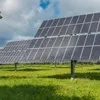The recent developments in the solar power industry amidst COVID-19
If India needs to fulfil its minimum energy demand by 2040, solar energy generation will play an important role in achieving that target.
The Indian solar power industry — the third most attractive market globally — is soaring to new heights with each passing year. Upon realising this market's true potential, the government ramped up its efforts and support towards improving the economics and attracting more investors.
If India needs to fulfil its minimum energy demand by 2040, solar energy generation will play an important role in achieving that target.
The current situation: Developers’ Woes
While it might seem things have gone back to normal post-COVID-19 disruption, the solar industry is still distressed because of the labour problem.
According to Mercom India, a major chunk of the labour force returned home during the initial scare, and chaos created by the second wave.
At present, the workforce has settled in and around the project sites, where all COVID-related precautions are taken and medical and quarantine facilities are provided. The impact, however, is not uniform across all developers.
Some developers who are more reliant on third-party engineering, procurement, and construction (EPC) services have taken a harder hit than those with in-house EPC management teams.
Due to disrupted supply chains, the delivery of equipment has been stalled, and consequently, so has the cash flow. The distress continues for solar power developers as they hope to see construction activities resume by the third quarter of 2021.
Key trends to watch for in 2021
Digitisation
2021 is a year of mass digitisation across all levels of the power sector —from manufacturing to infrastructure to end-user devices. Popularly referred to as Energy 4.0, this phase will enable the industry to deploy smart energy management and power management solutions.
Newer emerging technologies like AI and ML are beginning to play a significant role in servicing the demand and growing needs in the solar power segment.
An important development to watch for is the use of AI and ML in microgrid controllers. Solar power enterprises are leveraging these capabilities to identify trends in energy generation and power consumption. Forecasting may also see some major strides in estimating the production needs of a power plant.
Reducing hardware costs
In the last decade, the energy sector witnessed some pressure from various stakeholders to improve the adoption of renewable energy, while reducing the cost of utility-scale power plants.
The cost of solar PV modules has dropped dramatically over the years and forms a significant part of the success story of solar power.
Government policies played a significant role in stimulating the overall market growth, including feed-in tariffs, subsidies, and renewable portfolio standards.
Evolving methods of manufacturing and changes in modules further contributed to the reduction in costs. Technology breakthroughs are expected to continue this trend of cost reductions in the coming years.
Batteries to see an increased focus
There is a growing need for batteries that are extensively sold with solar PV modules. The coming years will witness a heavy deployment of solar storage capabilities to allow businesses and households to make the switch to renewable energy more easily.
The adoption of clean energy needs to be accelerated, and power storage technologies are the key to unlocking that potential.
Slower adoption of rooftop solar installations among consumers
Of the total rooftop installations across India, residential consumers have been the slowest adopters of this technology, accounting for only 16 percent.
Industrial and commercial sectors have been swiftly moving to renewable energy. Experts believe that a bottom-up approach is needed in this sub-segment of solar power as opposed to the current top-down approach.
A poor understanding of this technology and its benefits is impeding the faster adoption of solar power. The initial capital investment is also quite high, which ends up discouraging residents from making the switch.
Climate change awareness
The level of awareness about solar power applications in the housing segment is gradually rising among the masses. The government is working towards spreading more information about the need for renewable energy projects through various policy amendments.
In fact, the general public is becoming more conscious about the damage done to the environment in the process of chasing development. With greater environmental consciousness, more people are likely to start adopting eco-friendly energy sources in the long run.
Moreover, there is also a massive push for promoting domestic manufacturing to reduce the dependence on China. About 80 percent of parts and equipment needed in the construction of a solar power project are imported, thus making it capital intensive and harder to execute.
We, however, remain optimistic as the recovery from COVID-19 is finally showing the entire solar industry a silver lining. As in-process projects revive again, cash flows will once again become stable, and expansion can begin.
Edited by Suman Singh
(Disclaimer: The views and opinions expressed in this article are those of the author and do not necessarily reflect the views of YourStory.)







